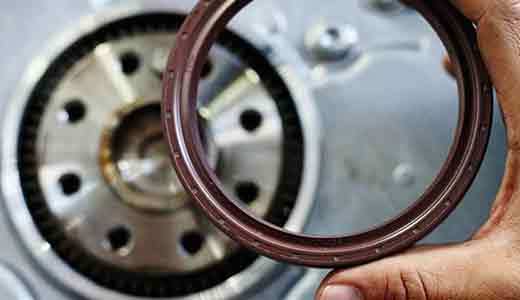Popular Information
Add: Yongkang st.renxian,xingtai city,hebei province china.054000
Tel:+86-319-7566977 7519805
Phone : +8613903298188
Fax:+86-319-7566976
E-mail :richard@bxseals.com
Understanding Hydraulic Seals: Essential Insights for Industrial Applications
Release Time:
Oct 28,2025
Hydraulic seals play a vital role in the functionality and efficiency of hydraulic systems used in various industrial applications. These seals are designed to prevent hydraulic fluid from leaking out of the system while also keeping contaminants from entering. This is particularly important in systems where precise fluid control is essential for optimal performance. There are several types of hyd
Hydraulic seals play a vital role in the functionality and efficiency of hydraulic systems used in various industrial applications. These seals are designed to prevent hydraulic fluid from leaking out of the system while also keeping contaminants from entering. This is particularly important in systems where precise fluid control is essential for optimal performance.
There are several types of hydraulic seals, each serving a specific purpose based on the application requirements. The most common types include O-rings, piston seals, rod seals, and backup rings. O-rings are versatile and can be used in many applications, while piston seals are specifically designed for use in hydraulic cylinders to maintain pressure. Rod seals, on the other hand, are used to seal the rod that extends and retracts in hydraulic cylinders. Backup rings are often used alongside other seals to prevent extrusion and enhance durability.
The material composition of hydraulic seals is crucial for their performance and longevity. Common materials include nitrile rubber, polyurethane, and fluorocarbon, each offering different temperature and chemical resistance properties. For example, nitrile rubber is widely used due to its excellent resistance to oil and fuel, making it suitable for many hydraulic applications. Polyurethane, known for its toughness and abrasion resistance, is ideal for applications where wear is a concern. Fluorocarbon seals, while typically more expensive, provide superior chemical resistance, making them suitable for harsh environments.
Proper installation and maintenance of hydraulic seals are essential to ensure their effectiveness and extend their lifespan. It is important to follow manufacturer guidelines for installation, paying close attention to the orientation and condition of sealing surfaces. Regular inspections can help identify wear and potential failures before they lead to significant issues. Keeping hydraulic systems well-maintained and free from contaminants is also key to preserving the integrity of hydraulic seals.
In conclusion, hydraulic seals are indispensable in ensuring the reliability and efficiency of hydraulic systems. By understanding the different types of seals, their materials, and the importance of proper maintenance, you can optimize their performance in your industrial applications. Investing time in selecting the right hydraulic seals and following best practices will ultimately lead to enhanced equipment reliability and reduced downtime.
There are several types of hydraulic seals, each serving a specific purpose based on the application requirements. The most common types include O-rings, piston seals, rod seals, and backup rings. O-rings are versatile and can be used in many applications, while piston seals are specifically designed for use in hydraulic cylinders to maintain pressure. Rod seals, on the other hand, are used to seal the rod that extends and retracts in hydraulic cylinders. Backup rings are often used alongside other seals to prevent extrusion and enhance durability.
The material composition of hydraulic seals is crucial for their performance and longevity. Common materials include nitrile rubber, polyurethane, and fluorocarbon, each offering different temperature and chemical resistance properties. For example, nitrile rubber is widely used due to its excellent resistance to oil and fuel, making it suitable for many hydraulic applications. Polyurethane, known for its toughness and abrasion resistance, is ideal for applications where wear is a concern. Fluorocarbon seals, while typically more expensive, provide superior chemical resistance, making them suitable for harsh environments.
Proper installation and maintenance of hydraulic seals are essential to ensure their effectiveness and extend their lifespan. It is important to follow manufacturer guidelines for installation, paying close attention to the orientation and condition of sealing surfaces. Regular inspections can help identify wear and potential failures before they lead to significant issues. Keeping hydraulic systems well-maintained and free from contaminants is also key to preserving the integrity of hydraulic seals.
In conclusion, hydraulic seals are indispensable in ensuring the reliability and efficiency of hydraulic systems. By understanding the different types of seals, their materials, and the importance of proper maintenance, you can optimize their performance in your industrial applications. Investing time in selecting the right hydraulic seals and following best practices will ultimately lead to enhanced equipment reliability and reduced downtime.
Key words:



